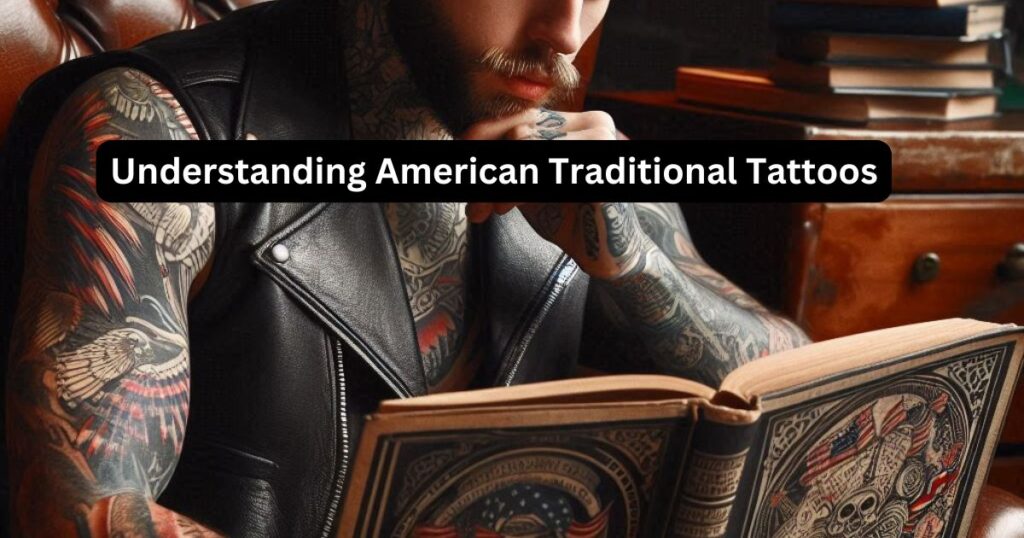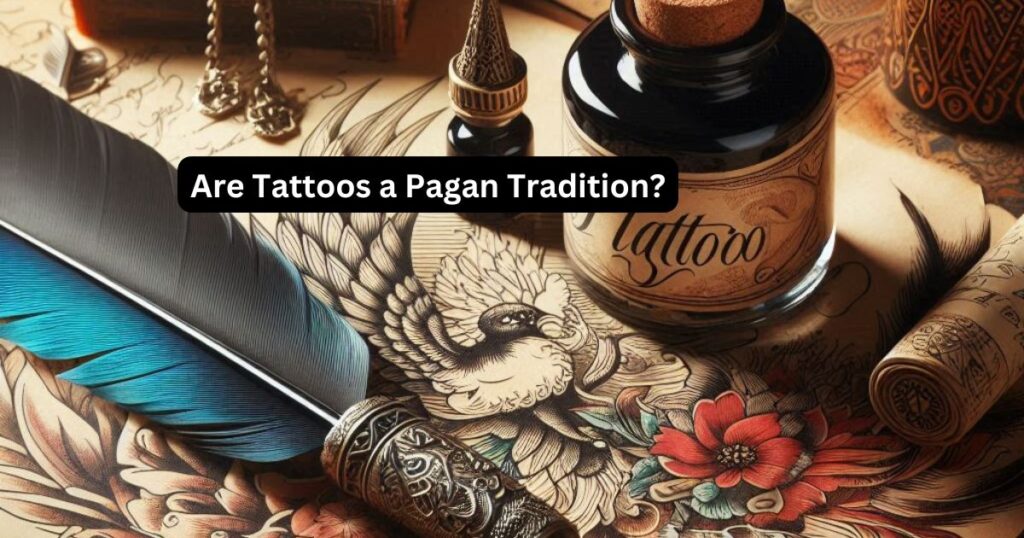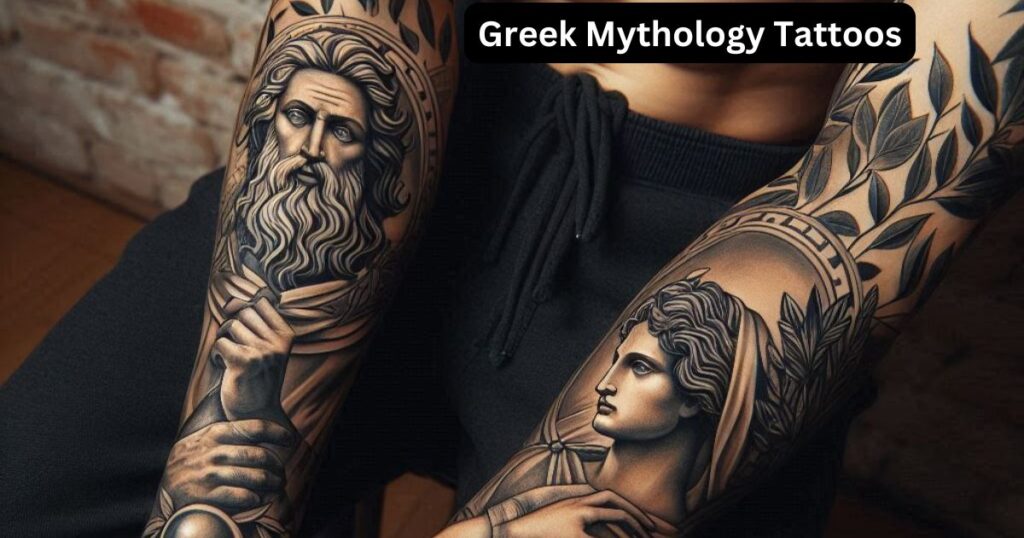American Traditional Tattoos, also known as “old school” tattoos, are iconic in the world of body art. These tattoos are characterized by bold lines, limited color palettes, and symbolic imagery. They have a rich history that ties deeply into the culture of tattooing in the United States.
The Origins of American Traditional Tattoos
The roots of American Traditional Tattoos date back to the early 20th century. Sailors, soldiers, and mariners popularized these designs. They often inked themselves as a form of self-expression, a way to commemorate their journeys, or as talismans for good luck.
One of the most influential figures in this style was Norman “Sailor Jerry” Collins. Based in Hawaii, Sailor Jerry created many of the classic designs that are still used today. His work was heavily influenced by the tattoos he saw on sailors, combined with his fascination with Eastern tattooing styles. This blend of cultures resulted in the bold, straightforward designs that define American Traditional Tattoos.
Defining Characteristics of American Traditional Tattoos
American Traditional Tattoos are easily recognizable by several key features:
- Bold Lines: The thick, black outlines are a hallmark of this style. These lines create strong borders that make the designs stand out, even from a distance.
- Limited Color Palette: Traditionally, only a few colors are used—red, yellow, green, blue, and black. This limited palette is part of what gives these tattoos their classic look.
- Iconic Imagery: The designs often feature symbols with deep meanings. Popular images include anchors, eagles, daggers, hearts, and roses. Each of these symbols carries its significance, often tied to themes of love, death, and patriotism.
- Simplicity: The designs are straightforward and lack intricate details. This simplicity makes them easy to replicate and ensures their longevity.
- 2D Appearance: American Traditional Tattoos maintain a flat look without shading or gradient. This two-dimensional style gives them their distinct, vintage appearance.
Common Motifs and Their Meanings
The symbols used in American Traditional Tattoos are more than just decorative. They often carry specific meanings, rooted in the experiences and beliefs of those who wear them.
- Anchor: Represents stability and strength. For sailors, it symbolized a safe return home.
- Swallow: A symbol of safe travels and a reminder of home. Sailors would often get a swallow tattoo after traveling a certain distance.
- Eagle: Signifies freedom and patriotism. The eagle is often depicted clutching arrows or the American flag.
- Heart with a Banner: Often inscribed with the name of a loved one, this tattoo symbolizes love and loyalty.
- Dagger: Represents bravery, sacrifice, or a willingness to fight. When combined with other symbols like a heart, it can represent a broken heart or betrayal.
- Pin-Up Girl: Celebrates femininity and beauty. These tattoos were popular among soldiers during World War II as a reminder of loved ones back home.
- Rose: A symbol of love, beauty, and balance. The rose can also signify passion or new beginnings.
The Cultural Impact of American Traditional Tattoos
American Traditional Tattoos have influenced the tattooing culture around the world. Their straightforward designs and bold aesthetics have remained popular for over a century, attracting people who appreciate both their historical significance and timeless appeal.
In recent years, there has been a resurgence of interest in this style, especially among younger generations. Many people are drawn to the nostalgic quality of these tattoos, as well as their connection to American history and identity. Tattoo artists today continue to draw inspiration from the classic motifs and techniques of American Traditional Tattoos, often blending them with modern elements to create new interpretations of this iconic style.
The Evolution of the Style
While the core elements of American Traditional Tattoos have remained consistent, the style has evolved. Modern tattoo artists have expanded the traditional color palette, introduced new imagery, and incorporated more detailed line work. However, the essence of the style—bold lines, strong imagery, and a limited color palette—remains unchanged.
This evolution has allowed the style to stay relevant while still honoring its roots. Many artists specialize in “neo-traditional” tattoos, which retain the classic elements but with a modern twist. These tattoos might include more shading, a wider range of colors, or more intricate designs. Despite these updates, they still pay homage to the original American Traditional style.
Choosing an American Traditional Tattoo
If you’re considering an American Traditional Tattoo, it’s essential to choose a design that resonates with you personally. Given the symbolic nature of the imagery, your tattoo can be a meaningful representation of your beliefs, experiences, or values.
When selecting a tattoo artist, it’s crucial to find someone who specializes in American Traditional Tattoos. This style requires precision and a deep understanding of the techniques involved.
Look for artists with a portfolio that showcases their experience with bold lines and classic designs. Don’t hesitate to discuss your ideas and preferences with your artist to ensure the final design aligns with your vision.
Placement Considerations
The placement of your tattoo can affect how it’s perceived and how well it ages. American Traditional Tattoos work well on almost any part of the body due to their bold, uncomplicated designs.
Popular placements include the arms, chest, and back. Larger designs might be better suited for broad areas like the chest or back, while smaller symbols work well on the arms, wrists, or legs.
Consider how visible you want your tattoo to be. Some people choose more discreet placements, while others opt for highly visible areas like the forearm or neck. Keep in mind that exposure to sunlight can cause tattoos to fade over time, so proper care is essential to maintain the vibrancy of the colors.
Tattoo Care and Maintenance
Proper care is crucial for keeping your American Traditional Tattoo looking its best. Immediately after getting your tattoo, follow your artist’s aftercare instructions carefully. This usually includes keeping the tattoo clean, applying a healing ointment, and avoiding exposure to direct sunlight.
Over time, your tattoo will require ongoing care to maintain its appearance. Moisturize your skin regularly to keep it hydrated, and always apply sunscreen to your tattoo when exposed to the sun. These steps will help prevent fading and keep the colors vibrant.
Why American Traditional Tattoos Endure
American Traditional Tattoos have stood the test of time for several reasons. Their bold designs and simple imagery make them visually striking, while their deep cultural roots give them a sense of history and significance. For many, these tattoos are more than just body art—they’re a way to connect with a broader tradition and express a timeless style.
The enduring popularity of American Traditional Tattoos also speaks to their versatility. Whether you’re looking for a small, meaningful symbol or a large, eye-catching piece, this style offers something for everyone. Its ability to adapt to modern tastes while staying true to its origins ensures that American Traditional Tattoos will continue to be a beloved choice for tattoo enthusiasts for generations to come.
Final Thoughts on American Traditional Tattoos
In the ever-evolving world of tattoos, American Traditional Tattoos remain a constant. Their bold lines, classic imagery, and deep symbolism continue to resonate with people from all walks of life.
Whether you’re drawn to their historical significance or their timeless aesthetic, an American Traditional Tattoo is a powerful way to express yourself and carry a piece of tattoo history with you.



